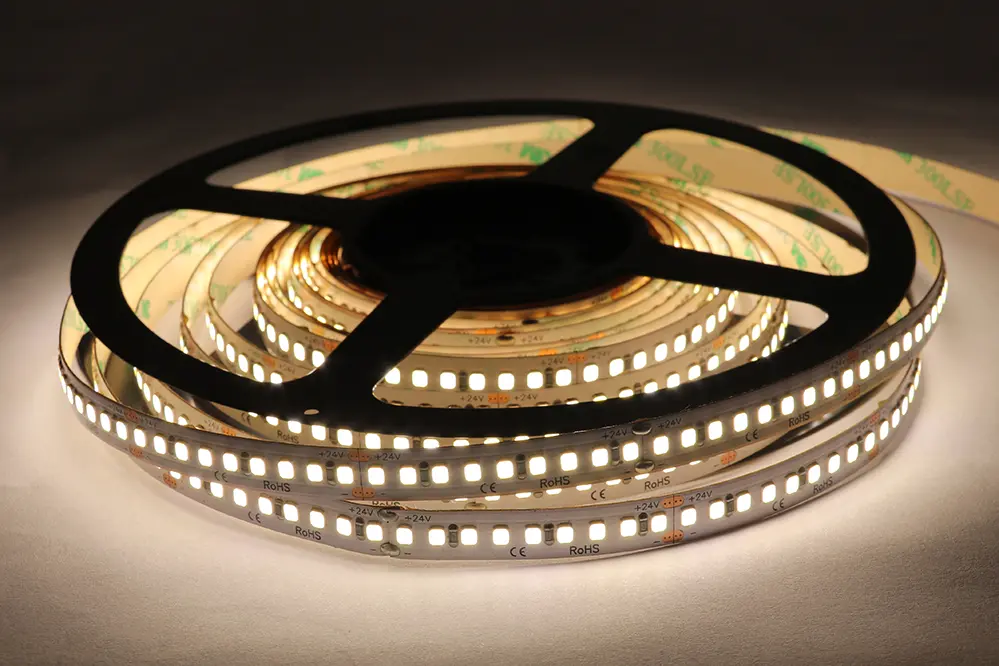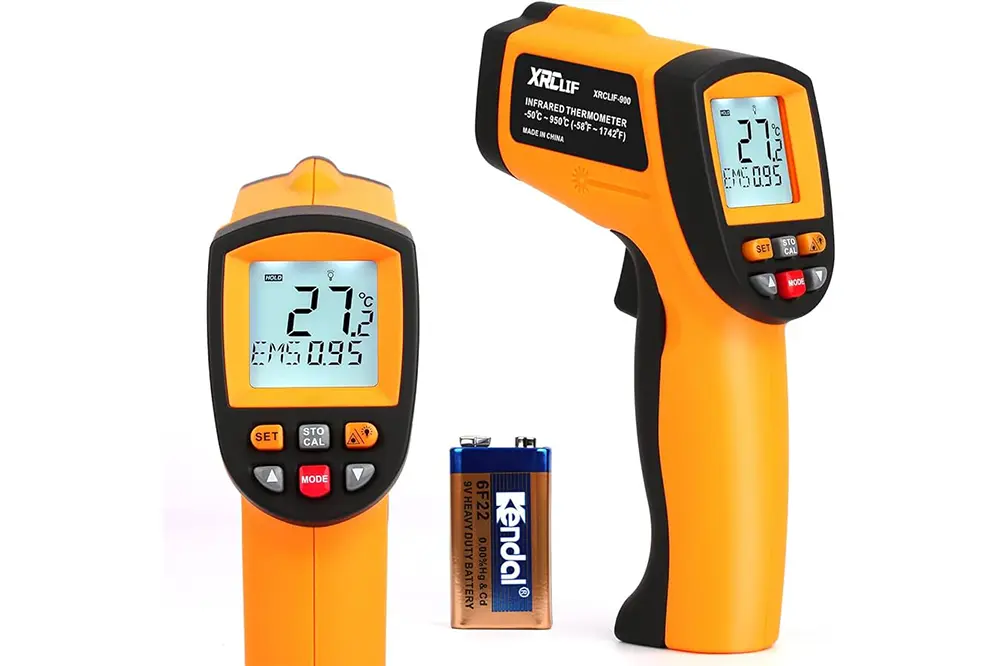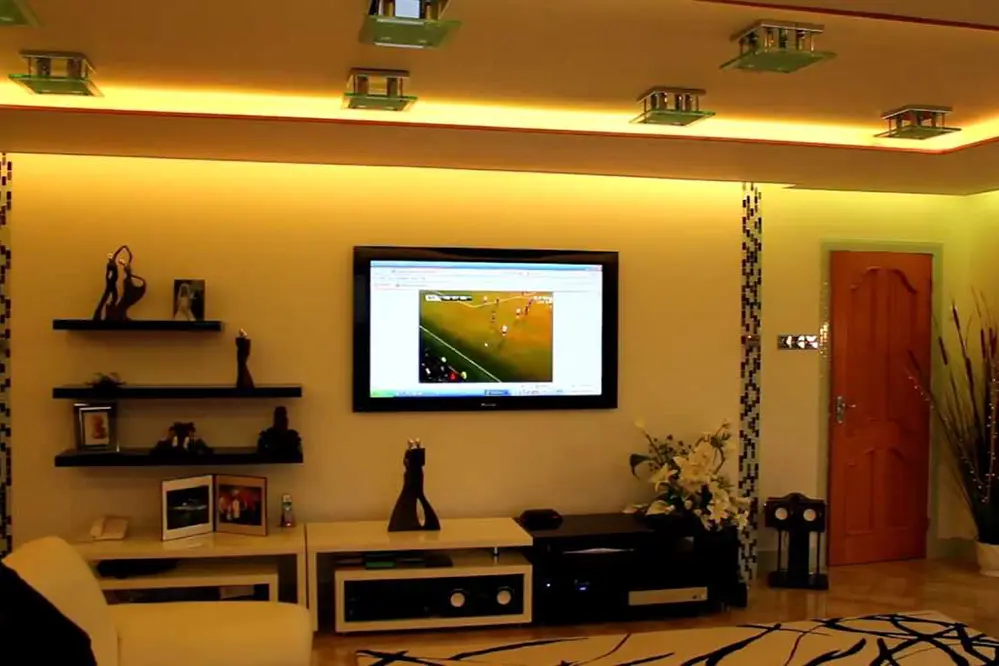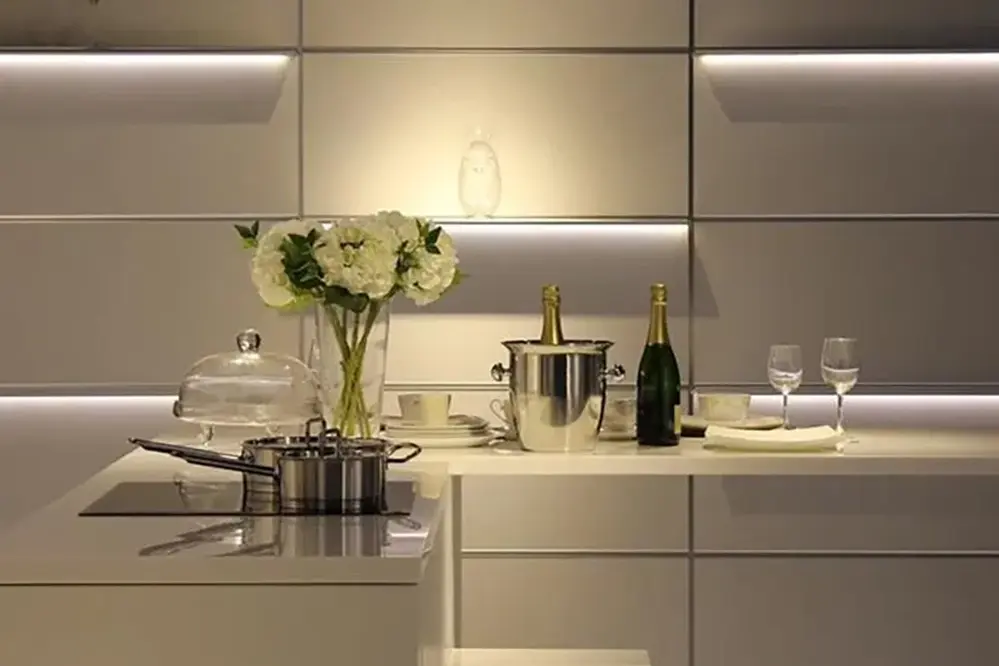Do LED strip lights get hot? Understand the heat output clearly
- 2024-04-24 13:44
- UNITOP
Are you curious about whether LED strip lights get hot? Look no further! In this blog post, we will delve into the topic and provide you with a comprehensive understanding of the heat output of LED strip lights. As lighting enthusiasts and professionals, it's crucial to know the ins and outs of this popular lighting solution.
LED strip lights do produce heat, but their heat output is significantly lower compared to traditional lighting options. Thanks to their energy-efficient design, LED strip lights convert most of the electrical energy into light, minimizing heat generation. However, it's essential to understand the factors that can affect the heat dissipation of LED strip lights to ensure optimal performance and longevity.
But that's not all! In the rest of this blog post, we will explore the reasons why LED strip lights may get hot, how much heat they actually produce, and what measures you can take to prevent overheating. So, if you want to gain a clear understanding of the heat output of LED strip lights, keep reading!
LED Strip Heat Generation Explained

LED strip lights do emit heat, albeit significantly less than incandescent or halogen bulbs. The heat generated by an LED strip is due to its electrical components and the light-emitting diodes themselves. During operation, the energy that is not converted into light is dissipated as heat. Consequently, while the surface of LED strips may become warm, they typically do not reach temperatures that pose a risk of combustion or injury—a distinct advantage for their widespread application in various settings.
The temperature of an LED strip is dependent on several factors, including its color temperature, density of LEDs per meter, and the quality of its construction. High-density LED strips with numerous diodes produce more light, and as a result, tend to generate more heat than those with fewer LEDs. Even so, with proper installation and thermal management practices, such as using a heat sink or aluminum channel for dissipation, LED strips can operate effectively without overheating.
The Science Behind LED Heat Output
LED strips convert electricity into light, with excess energy released as heat.
With an efficiency of up to 90%, LED strips waste less energy as heat compared to traditional lighting.
It is the inefficiency of this conversion that generates heat; however, it is considerably lower than traditional lighting solutions. Heat is typically managed through the strip's substrate material, which acts as a heat sink.
Despite their lower heat emission, the accumulation of heat can impact LED strip longevity and performance, underscoring the importance of proper heat management for optimal operation.
Comparing LED Strips to Traditional Lighting
When examining thermal management in lighting, LED strips present a favorable comparison to traditional incandescent bulbs, which emit a substantial portion of energy as heat rather than light. While both technologies convert electrical energy into illumination, the core difference lies in their respective efficiencies and the resultant thermal output.
Incandescent bulbs dissipate most of their energy as heat, making them inefficient.
LED strips, in contrast, are designed with heat emission in mind, utilizing materials that distribute the generated warmth effectively, thus preventing excessive heat buildup and subsequent performance degradation.
An LED strip can operate at a lower temperature because it has a more controlled and efficient light production process, which inherently generates less heat.
Consequently, this efficient energy conversion leads to a cooler operating environment for LED strips, which can positively affect both the longevity of the lighting solution and safety concerns associated with high temperatures.
Traditional lighting sources not only run hotter but often require additional measures for safe operation, such as fixtures designed to manage high temperatures and protect surrounding materials from heat damage.
LED strips, therefore, represent a notable improvement in the realm of lighting from a thermal
Assessing LED Strip Temperatures

While LED strips produce less heat than traditional lighting solutions, they do generate warmth due to the electrical processes involved. To accurately assess the temperature of LED strip lighting, one must consider the current density, environmental conditions, and heat dissipation capabilities of the mounting surface. These factors contribute to the overall thermal output, providing critical insight into the level of heat produced.
Thorough temperature assessment mitigates the risk of overheating, preserving the integrity and longevity of the LED strip. Frequent monitoring and proper thermal management ensure that the strip maintains optimal performance, mitigating any negative impacts on its functional lifespan.
Typical Operating Temperatures
LED strip lights operate at a relatively low temperature compared to incandescent bulbs. However, they do still generate heat that can be measured and should be monitored.
Under typical usage and with adequate ventilation, LED strips maintain a comfortable warmth, not exceeding normal touch-safe temperatures. Their advanced design helps to disperse heat, contributing to their overall efficiency and safety profile.
The precise temperature range can vary, but most LED strip lights operate within 30-40 degrees Celsius (86-104 degrees Fahrenheit) under normal conditions. Temperature can fluctuate based on factors like current load and ambient environment.
However, without sufficient heat sinking or in tightly enclosed spaces, LED strips can reach higher temperatures. This underscores the importance of proper installation and thermal management strategies to prevent potential overheating.
In conclusion, while LED strips do become warm during use, they are designed to handle their thermal emission effectively. Ensuring proper installation and ventilation will typically maintain safe temperatures without risk of damage or harm.
Factors Influencing Heat Levels
The heat levels of LED strip lights are highly contingent upon several critical factors which can affect their thermal performance.
- Current Load: The electrical current passing through the LED strip significantly influences heat creation.
- Ambient Temperature: Surrounding environmental conditions augment or dissipate heat from the LEDs.
- Installation Surface: Heat dissipation varies based on whether the strips are mounted on heat-conductive materials.
- Strip Length: Longer strips may generate more heat, as more LEDs are operating within the same system.
- LED Density: Strips with a higher number of LEDs per meter can result in elevated temperatures.
- Quality of the Strip: High-quality LED strips generally have better heat management features built into their design.
By assessing these characteristics, one can better predict the heat output and manage the installation accordingly.
Optimal heat management ensures longevity and efficiency of LED strip lights, offering both safety and performance benefits.
Lastly, disregarding these factors can lead to excessive heat, diminishing the LEDs' lifespan and even presenting a safety risk.
Risks of LED Strip Overheating

Excessive temperatures from LED strip lights can compromise their functionality, lead to a reduced lifespan, and potentially cause the deterioration of other components within close proximity. Especially, the adhesive backing commonly used for mounting may fail at elevated temperatures, resulting in detachment and potential hazards.
Furthermore, overheating conditions can be a precursor to more severe consequences, including the risk of fire, particularly if the LED strips are in contact with flammable materials. It is imperative to diligently monitor and manage the heat output of LED strip installations.
Identifying Overheating Symptoms
Pay close attention to discoloration.
When LED strip lights overheat, visual cues are amongst the first symptoms to appear. Users might observe that the color of the LED strip lights begins to change, or notice particular areas turning brown or black. This discoloration is a definitive indicator of excessive heat affecting the materials, which can be detrimental to both the aesthetics and functionality of the fixture.
Examine the strip for warping or melting.
The physical deformation of the LED strip is an overt symptom of heat stress. Any warping, bending, or melting — particularly around the LED nodes — signals that the temperature tolerance of the components has been surpassed, calling for immediate attention to prevent potential hazards or permanent damage.
Touch should be a cautious last resort.
Caution should be exercised when touching LED strips to test heat levels — it should not be severely warm to the touch. Exceeding safe touch temperatures suggests an urgent need for heat mitigation strategies or assessment for potential overcurrent conditions within the circuitry.
Adhesive failure is a common sign.
Loss of adhesion in LED strip lights often points towards thermal issues. Adhesives may weaken or fail, causing the strips to unmount or hang precariously—a situation that poses not only a functional concern but also a safety risk if not addressed in a timely and effective manner.
Presence of a burnt odor is alarming.
A burnt or unusual smell emanating from the vicinity of an LED strip installation demands immediate investigation. Such odors imply that the materials within or surrounding the LED strips are being adversely affected by excessive heat, which could portend more significant issues if left unchecked.
Long-Term Effects on Performance
Excessive heat over prolonged periods can lead to a degradation in the efficacy of the diodes, resulting in diminished brightness, color shifting, and a shorter lifespan of the LED strip. The luminous output can decline, revealing a less vibrant and a diminished quality of light over time.
Thermal strain may alter electronic properties, reducing the efficiency of the LED strip's power conversion. This could increase energy consumption while decreasing light output.
Additionally, overheating can damage the LED chip's internal structure, thereby reducing their light-emitting capability. This can often result (ultimately in operational failure) and necessitate replacements more frequently.
Constant exposure to high temperatures can contribute to the breakdown of materials within the strip itself, potentially leading to compromised insulation and increased risk of electrical shorts and outages.
Such heat-induced stress ultimately leads to accelerated wear and tear on the entire system. Hence, it's crucial to factor in effective thermal management solutions that ensure sustained optimal functioning of LED strips, preserving both their visual effect and structured integrity over time.
Therefore, mitigating heat not only preserves the strip's brightness and color fidelity but also extends its operational life, providing value and sustaining performance across its intended lifespan.
Maximizing LED Strip Lifespan

Proper thermal management is critical for maintaining LED strip longevity. By ensuring adequate airflow and heat dissipation, the risk of premature degradation is significantly mitigated.
In practice, selecting an environment with a stable temperature, avoiding enclosed spaces without ventilation, and incorporating heat sinks are strategic measures that safeguard LED strips from excessive thermal stress.
Lastly, employing dimmers to manage intensity not only personalizes lighting ambience but also reduces the heat generated, further elongating the strips' operational life.
Effective Heat Management Tips
Effective heat management is crucial for maintaining the performance and longevity of LED strip lights.
- Ensure Adequate Ventilation: Always install LED strips in areas with good airflow to prevent hotspots.
- Mount on Heat-Conductive Surfaces: Use materials like metal to help dissipate heat away from the LED strips.
- Incorporate Heat Sinks: Heat sinks can significantly improve heat dissipation for high-output LED strips.
- Use LED Profiles or Channels: These accessories provide a heat-dissipating casing and enhance the aesthetic appeal.
- Regulate Intensity with Dimmers: Lowering the brightness with dimmers can reduce heat output.
- Avoid Overlapping Strips: For installations requiring multiple layers of strip lighting, avoid stacking strips directly on top of each other.
- Adhere to Manufacturer Ratings: Heed the rated wattage and ensure the power supply is not overdriven.
Allowing LED strip lights to operate within their thermal management parameters is key to preventing overheating.
Carefully balancing heat dissipation with ambient conditions can lead to an optimized lighting system, safeguarding against degradation.
Choosing Quality for Cooler Operation
Invest in Professional Grade LED Strips.
Carefully selecting high-quality LED strip lights is imperative. These products are typically engineered with superior thermal management, which encompasses efficient heat sinks, better quality LEDs, and advanced PCB designs. Moreover, premium strips often integrate materials with high thermal conductivity to aid in maintaining cooler operation temperatures.
High thermal efficiency is a hallmark of excellence.
Opting for LED strips with high-quality chips and substrates can significantly impact heat generation. High-bin LEDs paired with copper or aluminum substrates offer superior thermal performance, resulting in less heat buildup and a longer lifespan for the diodes.
Evaluate the Watts per Foot metric.
Assessing and understanding the power drawn per unit length - commonly measured in Watts per foot - is pivotal. Lower power density typically correlates with reduced heat emission, fostering not just energy efficiency but also cooler operation conditions.
Adherence to industry standards is crucial.
Peer into the compliance with established standards and certifications - an aspect that is non-negotiable. Such adherence to industry benchmarks, including the well-regarded IEC standards of 2023, ensures that the heat management measures meet stringent criteria. This compliance is an assurance that the luminaires will perform optimally without excessive thermal stress, often backed by substantial warranty periods.
FAQs
Is it OK if LED lights get hot?
LED lights are designed to generate light without producing much heat. However, it is normal for LED lights to feel warm to the touch during operation. This is because LEDs produce light by converting electrical energy into light energy, but some energy is still dissipated as heat. As long as the LED light is not excessively hot or posing a safety risk, it is generally considered acceptable for LED lights to get slightly warm.
The warmth of LED lights is primarily due to the internal components and the efficiency of the LED itself. The heat generated by LEDs is typically managed through heat sinks or other cooling mechanisms built into the LED light fixture. These components help dissipate the heat and prevent the LED from overheating, which can affect its performance and lifespan.
It is important to understand that LED lights are much cooler compared to traditional incandescent lights, which emit a significant amount of heat. LED lights are more energy efficient because they convert a higher percentage of electrical energy into light rather than heat. This makes them not only safer to use but also more environmentally friendly, as they waste less energy in the form of heat.
In conclusion, it is perfectly normal for LED lights to get warm during operation. However, if an LED light becomes excessively hot or if you notice any abnormal behavior, it is recommended to consult a lighting professional or the manufacturer to ensure the safety and longevity of the LED light fixture.
Do LED strip lights produce heat?
Yes, all electrical devices, including LED strip lights, produce some level of heat due to inefficiencies in their operation. However, the amount of heat generated by LED strips is considerably lower than traditional incandescent or halogen lights.
Why do LED strip lights get hot?
The heat produced by LED strip lights is a result of electrical current passing through the semiconductor material, a portion of which is converted into heat energy. Quality factors such as chip efficacy, substrate material, and the presence of a heat sink play significant roles in determining how much heat is produced and how efficiently it's managed.
How hot do LED strip lights get?
Typically, LED strip lights remain cool enough to touch even after prolonged use, but their temperature can vary based on several factors. If the strip is enclosed or in a high ambient temperature environment, the LEDs can become sufficiently warm. Good quality strips with efficient heat sinks and proper ventilation rarely overheat.
Are LED strip lights safe to touch?
LED strip lights are generally safe to touch. They operate at low voltage and produce little to no heat, making them cool to the touch. However, it's important to exercise caution and consider a few factors before touching them.
Firstly, always ensure that the LED strip lights are disconnected from a power source before touching them. This reduces the risk of electrical shock.
Secondly, be mindful of any exposed wiring or damaged components. If the strip lights are damaged or have exposed wires, it's best to avoid touching them and seek professional assistance for repairs.
Additionally, if the strip lights have been in use for an extended period of time, they may become warm to the touch. While this is normal, it's advisable to avoid prolonged contact as it may cause discomfort.
In summary, LED strip lights are generally safe to touch due to their low voltage and lack of heat generation. However, always exercise caution, ensure they are disconnected from power, and be mindful of any damage or warm surfaces.
Can LED strip lights overheat?
LED strip lights are a popular choice for adding a touch of ambiance to any space, but can they overheat? The short answer is yes, LED strip lights can indeed overheat if not properly used or installed.
To understand why LED strip lights can overheat, it's essential to know how they work. LED strip lights consist of small LED chips that emit light and a flexible circuit board to house these chips. However, like any electronic device, LED strip lights generate heat during operation.
In the first paragraph, we establish that LED strip lights can overheat if not used or installed correctly.
To prevent overheating, LED strip lights usually come with adhesive backing to facilitate easy installation. However, if the strip lights are placed on a heat-sensitive surface or in an enclosed area without proper ventilation, the heat generated by the LED chips can get trapped, leading to overheating. This can cause a decrease in the lifespan and performance of the lights or, in worst cases, damage or fire hazards.
Ensure that the LED strip lights are mounted on a heat-resistant surface and that there is sufficient airflow around them to dissipate heat effectively. Additionally, using a LED strip light controller with built-in thermal protection can help monitor and regulate the temperature, preventing overheating.
In the third paragraph, we provide specific steps to prevent LED strip lights from overheating.
Regular maintenance and inspection of the LED strip lights are also crucial in preventing overheating issues. Look for signs of discoloration or burn marks on the circuit board and wires as these can indicate excessive heat. If any abnormalities are noticed, it's essential to address the issue immediately by either contacting the manufacturer or a qualified electrician.
Lastly, we highlight the importance of regular maintenance and inspection for preventing overheating.
By understanding the potential risks and taking necessary precautions, LED strip lights can be used safely and efficiently, enhancing the lighting experience without the worry of overheating.
Do LED strip lights get hot enough to start a fire?
LED strip lights are known for their energy efficiency and low heat generation. In general, LED strip lights do not get hot enough to start a fire. The design of LED strip lights includes heat sinks and other cooling features to dissipate any heat generated during operation.
LED strip lights produce light through a process called electroluminescence, which converts electrical energy into light without producing significant amounts of heat. This makes them much cooler to the touch compared to traditional incandescent or halogen lights.
While LED strip lights do generate some heat during operation, it is typically minimal and well within acceptable limits. However, it is still important to install and use LED strip lights properly to ensure safe operation. This includes properly securing the strips, providing adequate ventilation, and following any manufacturer guidelines for installation and usage.
In summary, LED strip lights are generally safe and do not generate enough heat to start a fire. However, it is always recommended to use caution and adhere to proper installation and usage guidelines to ensure the safety and longevity of the lights.
Do LED strip lights require cooling?
LED strip lights do require cooling to maintain their performance and extend their lifespan. Since LEDs produce light by converting electrical energy into light and heat, the heat generated needs to be dissipated to prevent overheating. Without proper cooling, the excessive heat can cause the LEDs to degrade and fail prematurely.
There are different methods of cooling LED strip lights. One common approach is the use of heat sinks, which are designed to absorb and dissipate heat efficiently. Heat sinks are typically made of materials with high thermal conductivity, such as aluminum or copper. They help to transfer the heat away from the LEDs and into the surrounding air, allowing for effective cooling.
In addition to heat sinks, LED strip lights may also incorporate other cooling methods, such as thermal pads or fans. Thermal pads are placed between the LEDs and the heat sink to enhance heat transfer, while fans can help to increase airflow and improve cooling performance. These cooling mechanisms work together to maintain the temperature of the LEDs within a safe operating range.
It's important to ensure that LED strip lights are properly installed and have adequate ventilation to optimize cooling. This includes leaving sufficient space for airflow, avoiding overcrowding, and avoiding placing the lights in enclosed spaces with poor ventilation. By providing appropriate cooling measures, you can enhance the performance and longevity of LED strip lights.
Is it OK to leave LED strip lights on all night?
Is it safe to leave LED strip lights on all night? LED strip lights are designed to be energy-efficient and have a longer lifespan compared to traditional lighting options. This means that they can be left on for extended periods without causing any significant issues. However, it is important to consider certain factors to ensure the safety and optimal performance of the lights.
Firstly, it is essential to choose high-quality LED strip lights that are specifically designed for continuous operation. Lower quality lights may overheat or experience other technical issues when left on for a prolonged period. Additionally, make sure to follow the manufacturer's instructions regarding usage and recommendations for continuous operation.
Secondly, consider the environment in which the LED strip lights are installed. Poor ventilation or lack of airflow around the lights can impact their performance and potentially lead to overheating. If the lights are installed in an enclosed space, monitor the temperature regularly to prevent any potential fire hazards.
Thirdly, consider energy consumption and cost implications. While LED lights are generally more energy-efficient, leaving them on all night can still consume a significant amount of electricity and increase your energy bills. If leaving the lights on all night is not necessary, consider using timers or smart switches to automate their operation and minimize energy usage.
In summary, it is generally safe to leave LED strip lights on all night as long as you choose high-quality lights, ensure proper ventilation, and consider the energy consumption. However, it is always recommended to follow the manufacturer's guidelines and exercise caution to maintain the safety and longevity of the lights.
Conclusion
LED strip lights do produce heat, but their temperature is generally low. Factors such as design, quality, and installation environment can influence heat generation. While LED strips operate at cooler temperatures than traditional lighting, proper installation and consideration of the operating environment are crucial to prevent heat-related issues. Adequate heat dissipation and following manufacturer guidelines are important. Selecting high-quality LED strips with effective thermal management is recommended. Ongoing advancements in LED technology aim to improve efficiency and reduce thermal output for enhanced safety and lifespan.
If you're in need of high-quality LED strip lights and LED neon strips, consider reaching out to Unitop, a professional Chinese manufacturer. With their expertise and commitment to excellence, Unitop offers a wide range of reliable and efficient lighting solutions. Whether you're a lighting enthusiast or a professional in the industry, Unitop can provide you with the products and support you need. Don't hesitate to contact Unitop for all your LED strip light needs and experience the difference of working with a trusted manufacturer.
